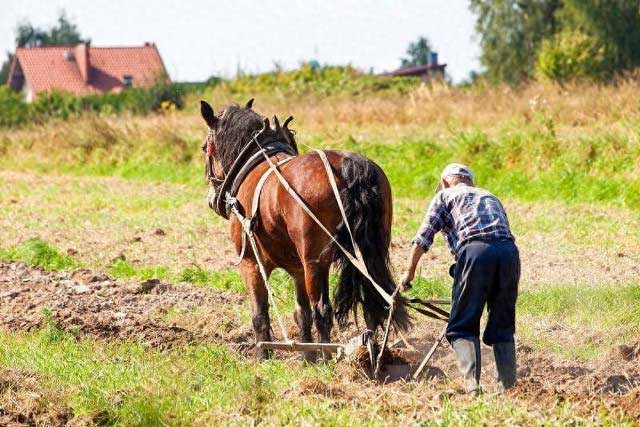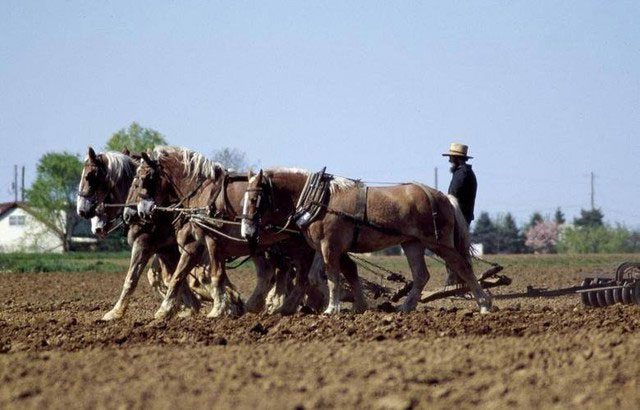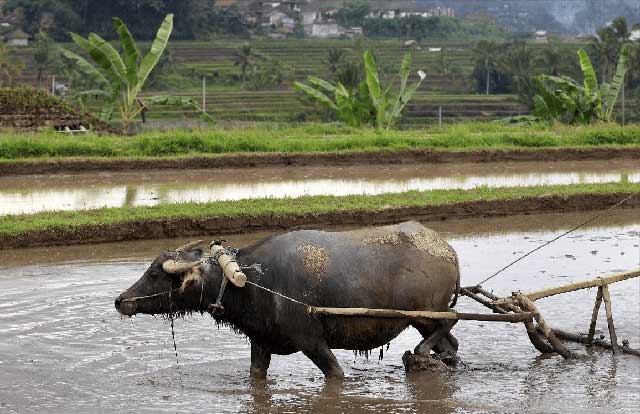The choice between using horses or water buffaloes for plowing fields is the result of the interaction between multiple complex factors, including natural conditions, economic, social, and cultural aspects. Each type of animal has its unique advantages and limitations, and the choice will depend on the specific circumstances.
Agriculture is an integral part of the development of ancient civilizations. Regardless of the country, land cultivation has always been the most crucial factor in agricultural production, and to carry out this work, humans cannot rely solely on their own labor.
Animals have become indispensable assistants in the cultivation process. While in China, Vietnam, and many neighboring countries, the image of water buffaloes and cattle plowing is often associated with agriculture, in Europe, horses are the primary animals used for plowing. This raises the question: Why is there this discrepancy, and does the Eastern or Western approach to land cultivation have advantages?

Agriculture is an integral part of the development of ancient civilizations.
Advantages of Horses in European Agriculture
In Chinese and Vietnamese culture, horses are often known as a means of warfare in cavalry or as transportation for heroes in martial arts novels. However, in Europe, horses play a significant role in agriculture. Horses have several outstanding advantages that make them suitable for plowing fields.
- Superior Strength and Speed: Horses possess a powerful build and excellent explosive strength, allowing them to perform plowing tasks 30 to 50% faster than water buffaloes and cattle. This enables European farmers to complete more work in less time, thereby increasing production efficiency.
- Appropriate Body Structure: The body structure of horses, with a heavier front and a lighter rear, is very suitable for pulling plows. This structure allows horses to easily use inertia to move the plow across different types of terrain, minimizing the effort required and optimizing productivity.
- Endurance and Longevity: Horses can work for 8 to 10 hours a day and can live up to 15-20 years. This makes horses an ideal choice for long-term and sustainable agriculture.
- Adaptability: Horses are omnivorous and can digest a variety of foods, from grass to concentrated feeds made from beans and corn. This adaptability allows them to thrive in areas with unstable food supplies, making horses an optimal choice in such conditions.

In Europe, horses play a significant role in agriculture.
However, despite their many advantages, using horses also presents some challenges. Horses require a high-quality diet and careful management to reach their full potential. During plowing, horses are prone to injury if not handled correctly, especially on rugged terrain. Additionally, training and controlling horses require higher skills compared to using cattle. These factors make horses a less common choice in areas that demand simplicity and cost-effectiveness in farming.
Advantages of Water Buffaloes and Cattle in Eastern Agriculture
In contrast to Europe, in most Eastern countries, water buffaloes and cattle have become familiar companions in agriculture. The use of cattle offers several benefits:
- Stability and Durability: Water buffaloes and cattle can pull plows continuously and steadily without easily tiring. They can adapt to various terrains and climates, from plains to mountains, and are less likely to injure themselves while working.
- Low Maintenance Costs: Water buffaloes and cattle are ruminants that can digest low-quality feed such as cellulose, reducing the costs of raising them. Economic optimization is one of the primary reasons these animals are popular in China and Vietnam, where farmers often face resource and financial constraints.
- Cultural Significance: Water buffaloes and cattle are not only tools in agriculture but also carry profound cultural significance. In Eastern culture, these animals symbolize hard work and resilience, reflecting the moral values of laborers.

In Asia, water buffaloes and cattle have become familiar companions in agriculture.
Although they have many advantages, the use of cattle also has drawbacks. Water buffaloes and cattle are slower than horses and take more time to complete plowing tasks. Additionally, the large size of these animals can damage crops when moving across fields, leading to economic losses.

Water buffaloes and cattle can pull plows continuously and steadily without easily tiring.
Choosing According to Local Conditions
Both horses and water buffaloes/cattle have their own advantages and disadvantages, and the choice of which type of animal to use depends on many factors such as climate, terrain, history, and the socio-economic conditions of each region.
In Europe, horses are the ideal choice due to their ability to move flexibly across various terrains, from plains to hills, and their suitability for drier climates. The tradition of using horses in agriculture dates back to ancient Roman times and has been maintained into the Middle Ages, when horses played important roles not only in agriculture but also in warfare and transportation.
In contrast, in the East, particularly in southern China and Vietnam, with their rice paddies, the muddy environment is unsuitable for horses. Water buffaloes and cattle, with their stability and enduring work capacity, have become the preferred choice. They not only help in plowing the land but also provide many by-products, such as milk and meat, which improve the livelihoods of farmers.

Horses and water buffaloes/cattle both play important roles and have significantly contributed to the development of ancient civilizations.
The differences in the use of horses and water buffaloes/cattle in ancient agriculture between the East and West not only reflect different natural and social conditions but also demonstrate human adaptation to their living environment. Horses and water buffaloes/cattle each have their important roles and have greatly contributed to the development of ancient civilizations. These different choices each have their own reasons and have helped shape the culture, economy, and society of various regions around the world.


















































